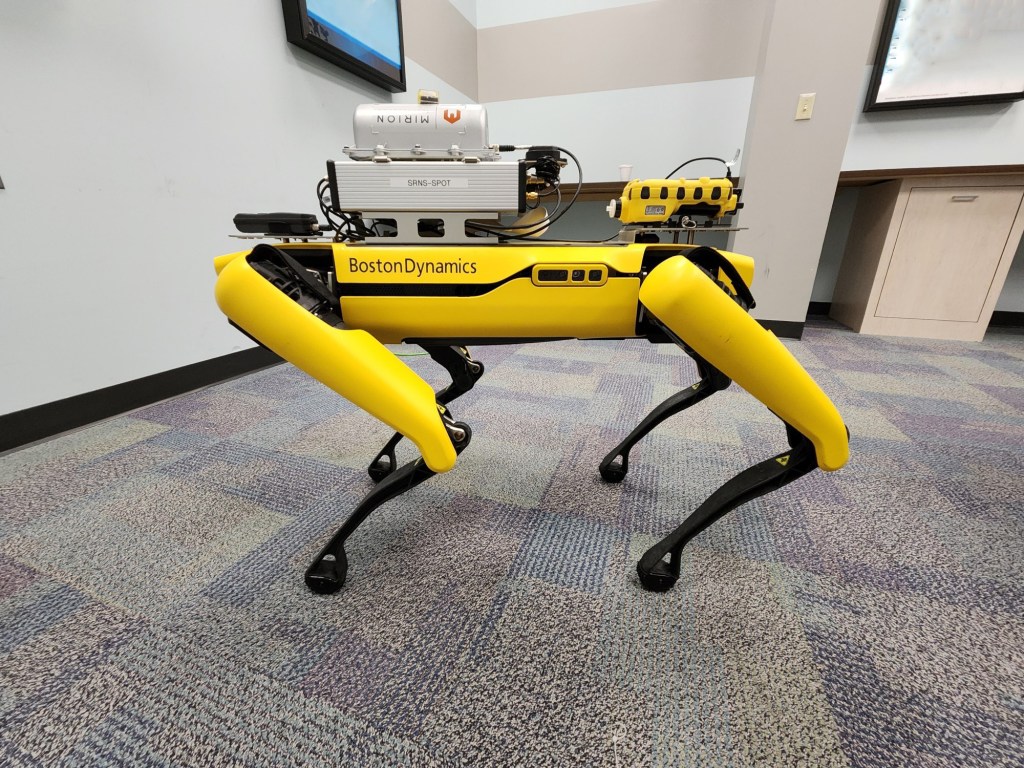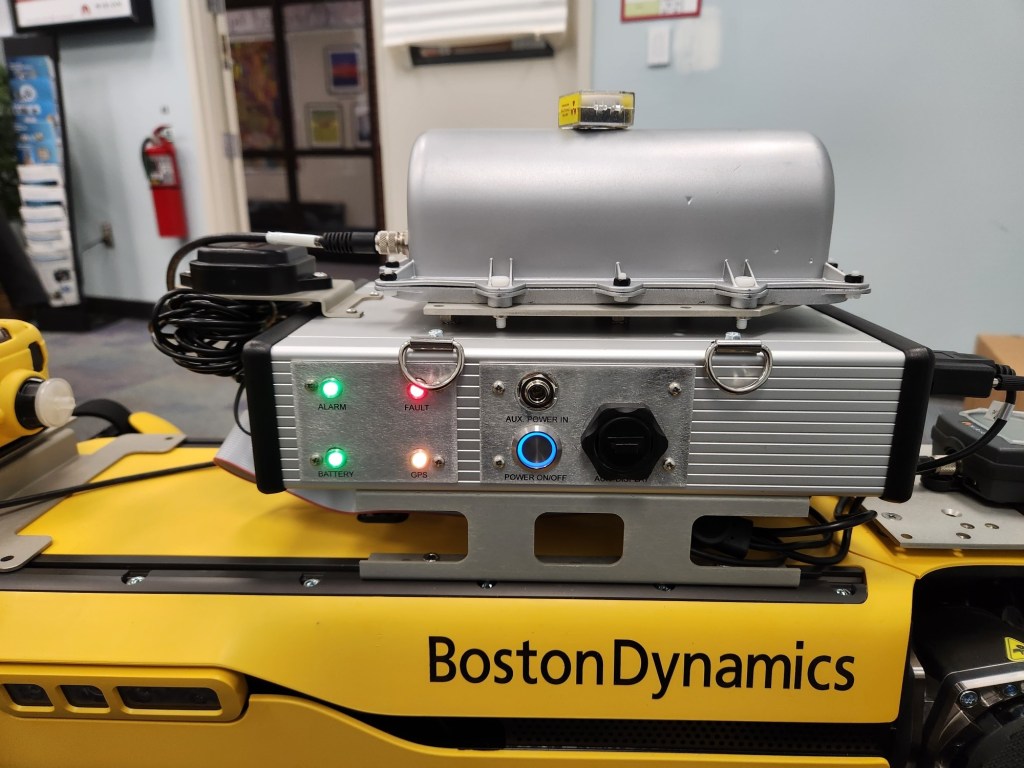See Spot Reduce Hazards to Workers
Savannah River National Laboratory’s (SRNL) Global Security Directorate (GSD) Mobile Plutonium Facility (MPF) is deploying an innovative safety robot. Boston Dynamics’s Spot is a four-legged, dog-like robot monitoring device that will provide operational awareness for the Mobile Plutonium Facility (MPF) team and reduce human exposure to radiation and other hazards.
This initiative decision comes after MPF actively participated in a Dark Sleeper exercise in which the team was charged with identifying ways to safely characterize and package Special Nuclear Material (SNM). The team later worked with Mirion Technologies, a strategic partner of Boston Dynamics’, to create the current monitoring package acquired by the NNSA Mobile Packaging Program and SRNL GSD.

Photo taken at Mirion Technologies headquarters facility in Meriden, CT, during the Facility Acceptance Testing (FAT) showing the front of SPOT, with the RDS-32itx dose / dose rate instrument mounted above the forward-facing cameras.
Spot boasts a range of features that make it an ideal candidate for MPF’s and SRNL’s safety initiatives. Equipped with advanced sensors and cameras, Spot can navigate complex environments with ease, including areas that might be physically challenging or dangerous for personnel. Its ability to traverse rough terrains, climb stairs and maneuver through tight spaces, provides MPF with unparalleled flexibility in conducting inspections across a variety of areas.
One of Spot’s key capabilities is its autonomous operation, allowing it to navigate predefined routes, ensuring that MPF inspectors can focus on analyzing data and make informed decisions while Spot executes the physical inspection tasks. SPOT’s unique agility and advanced autonomy will extend the reach of the MPF team and reduce hazards they may potentially encounter.
Spot’s payload capacity is another advantage. The robot can carry a variety of sensors and equipment, such as thermal cameras, gas detectors and 3D laser scanners. This versatility allows MPF to customize Spot’s payload based on the specific requirements of each inspection, making it a versatile tool for identifying potential safety hazards.

Side view of SPOT taken at Mirion Technologies headquarters facility in Meriden, CT, during the Facility Acceptance Testing (FAT) for that equipment. The label on the “backpack” identifies this robot as “SRNL – SPOT”. The SPIR Explorer spectrometry module is mounted on top of the “backpack”, and the Honeywell MultiRAE industrial hygiene monitor is mounted over the rear legs.
Spot is equipped with Site Protection against Intrusion of Radioactive materials, or SPIR, an integrated feature that includes instrumentation capable of identification, characterization and monitoring of radioactive material.
The SPIR Explorer sensor is a lightweight radiation detector that provides real-time, instant detection and measurement of radionuclides, as well as mapping of dose rates. The payload also includes the most advanced portable chemical detector on the market, Honeywell MultiRAE, and mesh Radio Frequency (RF) communication for operation at extended range. Spot’s 30.9 pounds of payload capacity, robust Application Programming Interface (API) and comprehensive documentation allows users to tailor its capabilities to their specific needs.
Before deploying Spot, the MPF team will undergo training with both Boston Dynamics and Mirion Technologies to perform qualification on the robot and the characterization and monitoring payload. The team is expected to begin using Spot in a live exercise later this year.

Close up shot of the SPIR Explorer gamma spectrometry instrument with a small radioactive source sitting on top of the detector. Photo taken at Mirion Technologies headquarters facility in Meriden, CT, during the Facility Acceptance Testing (FAT) for that equipment.